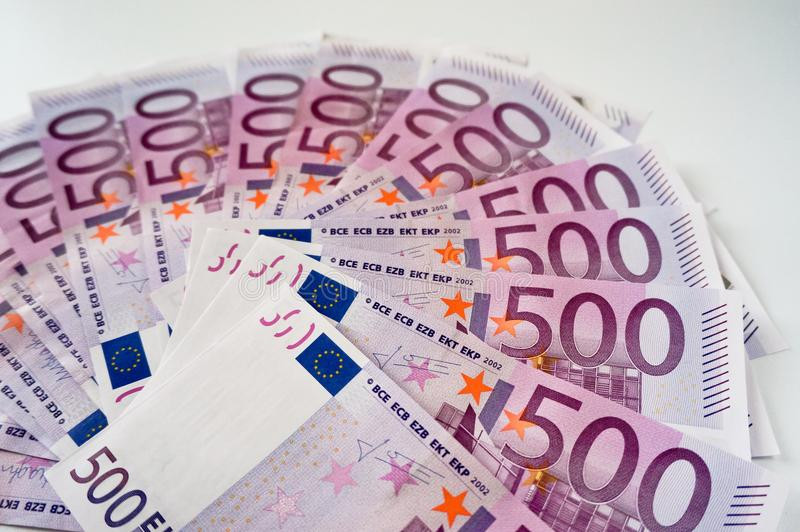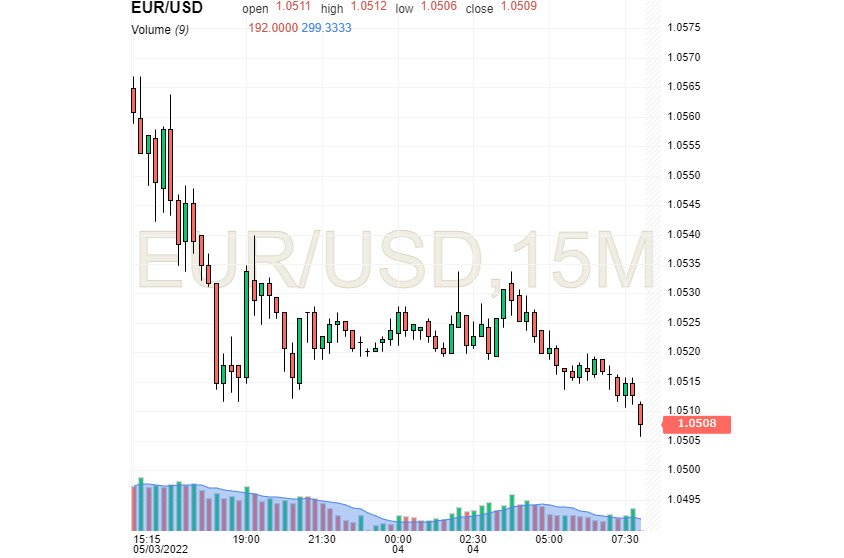
Analysts are worried about the prolonged downward movement of the euro. They are unable to say for how long it may last. They expect a further decline in the price with temporary upward swings.
Over the past three months, the European currency has fallen by 14% against the US dollar. The euro weakened mainly because of concerns about soaring inflation, slowing economic growth, and the possibility of an energy crunch amid sanctions against Russia.
On May 3, the euro/dollar was trading near a five-year low. The main reasons for such a sharp drop were the geopolitical risks associated with the Russia–Ukraine conflict, as well as the energy confrontation between Russia and the European Union. These factors are extremely negative for the euro block economy. They also undermine demand for risky assets. As a result, safe-haven currencies, especially the US dollar, are steadily rising now. The greenback is climbing higher also amid expectations of a rate hike by the Fed at the May meeting.
The Fed sticks to a hawkish approach to the monetary policy against the backdrop of galloping inflation. Consumer prices in the US have already hit a four-decade high. At the same time, the ECB remains cautious and does not rush to raise the interest rate. However, market participants expect the ECB to hike interest rates by 90 basis points by the end of the year with the first rate increase in July 2022.
While the ECB is sitting on the sidelines, the Fed is taking more aggressive measures. For instance, it is ready to raise the key rate by 50 basis points and start reducing its $9 trillion balance sheet in the coming months. On May 4, the regulator may increase the interest rate during its two-day meeting.
The euro also retreated after the release of the disappointing economic sentiment index. The ZEW Indicator of Economic Sentiment for Germany recorded a drastic decline in the current April 2022 survey. The sentiment in the business sector declined the most. Households are worried about their future incomes as well as they acknowledge the need to save money. Such a situation may lead to a slowdown in economic recovery, experts believe.
The euro has so far dipped to 1.0500. Experts assume that it may weaken even more. Since 2015, the 1.0600 level has acted as support for the euro. However, it has been already broken. On May 4, the EUR/USD pair was trading in the range of 1.0508–1.0509.

As for technical analysis, a breakout of the 1.0500 level indicates that the euro is heading to parity with the US dollar. However, there is a possibility of a rebound of the euro. In April, it sank to 1,0500 from1,1000. According to analysts, it takes more time before EUR achieves parity with USD. However, by the end of this year, this scenario looks quite feasible.
Thanks to the short-term weakening of the greenback on Tuesday evening, the euro was able to slightly regain ground. An increase in the yield of 10-year German bonds also boosted a rise in the euro. On Tuesday, Germany's government bonds exceeded 1% for the first time in the last seven years.
The euro may lose steam if the Russia-Ukraine conflict intensifies. Apart from that, the possibility of an energy crisis is also pushing it down. An increase in the interest rate by the ECB may help the euro rise higher. If by the end of this year the regulator decides to raise the benchmark rate, it may boost the growth of the European currency.
Currently, investors prefer safe-haven assets, namely the greenback. Given the current geopolitical situation and woes in the energy sector, the US dollar is more stable than other currencies. Gold remains its only rival as it is also considered one of the main safe-haven assets.
After having studied comments provided by the Fed and the ECB, analysts concluded that the US would hike rates at a faster pace than the ECB. According to preliminary forecasts, the Fed is likely to raise the key rate by 0.5% at every meeting. It will only increase demand for the US dollar. Its rally may also continue amid the energy confrontation between Russia and Europe.
 Tiếng Việt
Tiếng Việt 
 Русский
Русский English
English Bahasa Indonesia
Bahasa Indonesia Bahasa Malay
Bahasa Malay ไทย
ไทย Español
Español Deutsch
Deutsch Български
Български Français
Français 中文
中文 বাংলা
বাংলা हिन्दी
हिन्दी Čeština
Čeština Українська
Українська Română
Română

